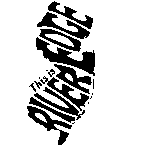Curious about the unseen details of the land you own? Consider the plat map, an essential document prepared by surveyors that provides in-depth information about property boundaries and more.
This map is a crucial tool for understanding the specifics of your land. But what is its function, and what makes it so significant?
We'll look at the plat map's utility, shedding new light on its importance and your potential interest in the hidden details it contains.
Key Takeaways
Curious about the details of the land you own that are not immediately apparent? The plat map is an indispensable document crafted by surveyors that provides comprehensive information about property boundaries and additional features.
This map is a vital resource for grasping the specifics of your property. But why is it so important, and why should you be interested in the concealed details it reveals?
We will examine the usefulness of the plat map, illuminating its significance and your potential interest in the hidden information it reveals.
What Is a Plat Map?
A plat map is an official document produced by surveyors that delineates the precise boundaries of each parcel of land, outlining features such as streets, water bodies, buildings, and other elements. This tool is invaluable for homeowners, real estate professionals, and government agencies at the municipal level. The use of plat maps is widespread for the identification of property lines, the settling of boundary disagreements, and the investigation of zoning laws. These documents offer important data regarding the configuration and traits of a particular locale.
Homeowners benefit from plat maps to comprehend the limits of their property, plan for enhancements to their homes, and understand zoning laws. Real estate experts depend on these maps for aiding in property transactions and conducting searches related to property titles. Municipal agencies utilize plat maps for the oversight of land utilization and planning for future development.
In essence, plat maps are fundamental documents that supply intricate information about land demarcations and various significant characteristics.
Types of Plat Maps
There are several different types of plat maps that serve various purposes and cater to specific needs. Here are four types of plat maps you should know about:
- Amending plat: Captures modifications to an existing plat.
- Plat of Consolidation: Unites neighboring properties into one parcel.
- Short Plat: Divides a single parcel into up to four separate pieces.
- Plat of Subdivision: Represents the division of a large tract of land into multiple parcels.
Each type of plat map serves a unique function and provides valuable information about the land. Whether you're a homeowner, real estate professional, or local government entity, understanding the different types of plat maps can help you navigate property boundaries, resolve disputes, and plan future projects.
Data Found on a Plat Map
Plat maps offer a substantial amount of useful information, including property lines, easements, utilities, zoning district lines, and waterways. These maps are vital for grasping the layout of a property and its environment.
Reviewing a plat map, one can easily identify the boundaries of their property and any shared lines with adjacent properties. Easements and rights-of-way are also distinctly indicated, helping you comprehend any limitations or constraints on your land.
Plat maps also show the locations of utilities and infrastructure, like water lines and electricity networks. Zoning district lines are essential for knowing the allowed uses and limitations for your property.
Waterways, which are crucial for floodplain management and environmental evaluations, are displayed on plat maps as well.
Accessing and Using a Plat Map
To access and utilize a plat map effectively, you can start by contacting the local government or county records office. They'll provide you with the necessary information and resources to obtain a plat map for the desired area.
Here's how you can access and use a plat map:
- Contact the local government or county records office: Reach out to the appropriate authority to inquire about the availability of plat maps and how to obtain them.
- Check online resources: Many local governments and county assessors offices have digital copies or interactive maps available on their websites.
- Be aware of potential fees and limitations: Some jurisdictions may charge for accessing plat maps, and there may be certain restrictions on their use.
- Additional considerations: Recent surveys or subdivisions may not have plat maps ready for access.
Once you have a plat map, you can use it to:
- Determine property boundaries
- Resolve disputes
- Plan home improvement projects
- Get a grasp of zoning regulations
- Assist in real estate transactions
- Identify environmental hazards.
Importance of Plat Maps
Understanding the significance of plat maps is vital for homeowners, real estate professionals, and local governments. Plat maps offer detailed insights into property boundaries, infrastructure, and natural landmarks. They're critical for settling property disputes, designing construction endeavors, and facilitating real estate deals.
Homeowners use plat maps to determine the extent of their property, plan improvements to their residences, and comprehend zoning laws. Real estate experts depend on plat maps for conducting title research and spotting environmental risks.
Local authorities utilize plat maps for land management, enforcing zoning laws, and supporting emergency response plans. Plat maps serve as an indispensable resource that delivers important information for a range of uses and interested parties.
Uses of Plat Maps
As a homeowner, real estate professional, or local government entity, you rely on plat maps to gain valuable insights into property boundaries, infrastructure, and natural landmarks. Here are four uses of plat maps that highlight their importance:
- Resolving property disputes: Plat maps provide clear information about property lines, helping to settle boundary disagreements between neighbors.
- Planning construction projects: By understanding property boundaries and existing infrastructure, plat maps assist in designing and implementing construction projects such as home improvements or additions.
- Understanding zoning regulations: Plat maps indicate zoning district boundaries, enabling homeowners and real estate professionals to comply with local zoning regulations and building codes.
- Environmental assessments and emergency planning: Plat maps help identify environmental hazards and aid in emergency planning by highlighting waterways, flood zones, and other natural features.
Obtaining Plat Maps From Local Government
Looking to obtain plat maps from your local government? Accessing plat maps from your local government or county records office is uncomplicated. Begin by contacting the department or office in charge of land records. They'll provide instructions on how to request and receive the plat maps you need.
Besides visiting in person, many local governments and county assessors offices offer online tools where you can find plat maps electronically. However, note that there might be fees for acquiring these documents, and some recent surveys or subdivisions may not have plat maps available immediately.
Online Resources for Plat Maps
Online Resources for Plat Maps
To access plat maps with ease, utilize the online services offered by your local government or county assessors' offices. These services can grant you swift and straightforward access to important information regarding your property and the surrounding locale.
Below are four advantages of using online resources for plat maps:
- Convenience: Obtain plat maps from the comfort of your home, eliminating the need to travel to physical locations or to endure long waits.
- Accessibility: The online platform provides the opportunity to view and download plat maps at any moment, granting you the liberty to carry out your research and planning according to your schedule.
- Accuracy: Plat maps available online are often refreshed continually, which means you receive the latest data.
- Cost-effective: Access to online plat maps often comes without charge or with nominal fees, offering an economical solution for homeowners, real estate experts, and scholars.
Limitations and Considerations
Before using plat maps, it's important to be aware of their limitations and consider certain factors.
While plat maps provide valuable information on property boundaries, infrastructure, and natural features, they do have some limitations.
First, it's crucial to understand that plat maps aren't always up-to-date. Recent surveys or subdivisions may not have readily available plat maps, so it's essential to verify the accuracy of the information.
Additionally, plat maps may not include certain details, such as changes in zoning regulations or recent property modifications.
It's also important to note that plat maps may not accurately depict the terrain or topography of the land. Therefore, it's advisable to use plat maps in conjunction with other resources and consult professionals for a comprehensive understanding of the property.
Frequently Asked Questions
How Are Plat Maps Created and Who Is Responsible for Creating Them?
Plat maps are crafted by professional land surveyors. Their duty is to ensure that these maps accurately reflect property lines, built environments, and geographical features. These documents are crucial for individuals and entities looking to comprehend and administer land, serving property owners, professionals in real estate, and municipal agencies.
Can Plat Maps Be Used as Legal Documents in Property Disputes?
Plat maps can serve as authoritative references in disputes over property. They offer precise details on the limits of properties, aiding in the resolution of disagreements and the confirmation of ownership claims.
Are There Any Limitations or Restrictions on Accessing Plat Maps?
Access to plat maps might come with certain limitations or restrictions. You should get in touch with your local government or the office responsible for keeping county records. Searching through online platforms could be beneficial, but keep in mind there might be charges involved. Newly conducted surveys or recently created subdivisions might not have plat maps that are immediately accessible.
What Information Is Typically Included in a Plat Map Regarding Utilities and Infrastructure?
A plat map typically includes details about utilities and infrastructure. You might see the location of water and power lines, along with other crucial services. This information is useful for understanding property boundaries and making planning decisions.
Are Plat Maps Available for All Areas and Regions, or Are There Certain Areas Where They May Not Be Readily Available?
Plat maps are generally accessible for most areas, but there could be specific regions where obtaining them is more challenging. You might want to reach out to local government or county offices or search through online databases, keeping in mind that there may be some restrictions.



